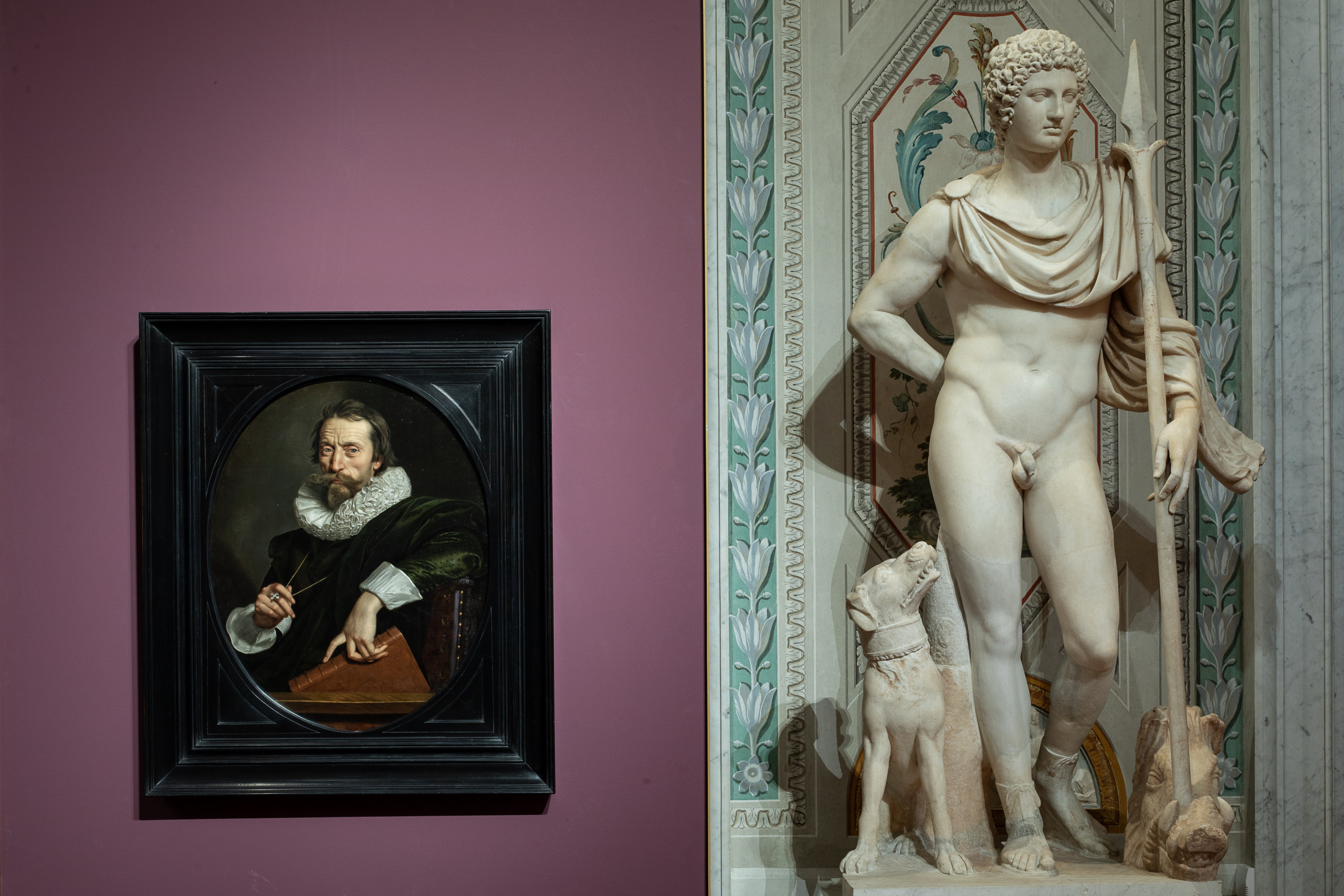BIO

Marino was born in Naples in 1569. Little is known about his youth but we know that he dedicated himself to poetry early on and that, in around 1593, he joined the court of Matteo of Capua, prince of Conca. There, he was able to admire Matteo’s impressive art collection, full of works attributed to Raphael, Correggio and Titian.
Towards the end of the century, the first signals of an unusual character emerged. He was incarcerated twice – first in 1598, then in 1600 – for accusations which remain somewhat mysterious. In 1600, he managed to flee to Rome, where he quickly secured protection from the family of Melchiorre Crescenzi, the Cleric of pope Clement VIII Aldobrandini. It would prove to be a formative chapter in the poet’s life, because it allowed Marino to immerse himself in the literary scene and the aristocratic world, especially the one in Rome. He mingled with cardinals, poets and painters, among whom were Caravaggio and the Cavalier d’Arpino.
In 1602 he published ‘Rime’ in Venice, reaching significant success, to such an extent that he was invited to work for Pietro Aldobrandini, the cardinal nephew of Clement VII. However, after Clement VII’s death this position became less favourable. Marino was forced to move to Ravenna with the Aldobrandini. He quickly sought another court position and, in 1608-1609, he grew close to the Duke Carlo Emmanuele I of Savoy, and the court of Turin.
When he reached Turin, the success he had obtained sparked a rivalry with the poet Gasparo Murtola. Their conflict started with an exchange of insulting sonnets but Murtola, sensing defeat, decided to get rid of Marino by shooting him in the street. The attack failed. Murtola was arrested and Marino remained the master of the poetic field. However, at that very moment, a case was opened up against Marino by the inquisiton in Rome, accusing him of composing ‘obscene and
sinful poetry’.
In testament to his restless nature, Marino was arrested again in April of 1611, this time by Carlo Emanuele’s order for reasons which remain unknown. He remained in prison for another year and, in a telling detail, all of his manuscripts were confiscated. In 1614, once he was freed, he published another collection of poetry, the Lira, and a long, prose piece, Dicerie sacre. This last work, dedicated to the pope, ought to have softened the threat of the inquisition but his efforts did not succeed and Marino was repeatedly called to Rome to be interrogated.
Fearing his arrest, Marino moved to Paris in 1615, to the court of Maria de’Medici and swiftly earned a privileged position there too. He lived in Paris for eight years, publishing several works (most notably the Gallery in 1619 – a collection of 624 poems, each one thought to be a poetic
exercise relating to a work of art). In 1623, towards the end of his stay in France, two key events occurred: the Adone, Marino’s masterpiece, was published, and Marino met the young Nicolas Poussin, who received Marino’s admiration and his support to come to Rome.
In 1623 he decided to return to Rome. However, once he arrived he found himself in an unfortunate position. The new pope Urban VIII Barberini, did not temper the legal action against Marino, which was still active in the holy office. Therefore, Marino was first forced into house arrest, followed by the humiliation of a public retraction in the church of Santa Maria under Minerva.
In 1624, distribution of the Adone was suspended by the inquisition. Marino decided to leave Rome and go to Naples, where he planned to organise a large house-museum where he would gather his books and all the artworks he had collected over the years. However, towards the end of the year, he fell ill and eventually died on the 26th of March 1625. Before he died, Marino decided to burn all the manuscripts of his profane works. A witness reported that “he commanded in his will that all his manuscripts should be set on fire, not only the satirical and lascivious ones, but all which were not sacred”.